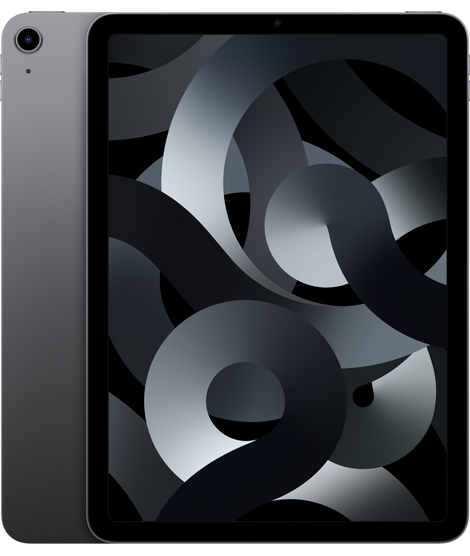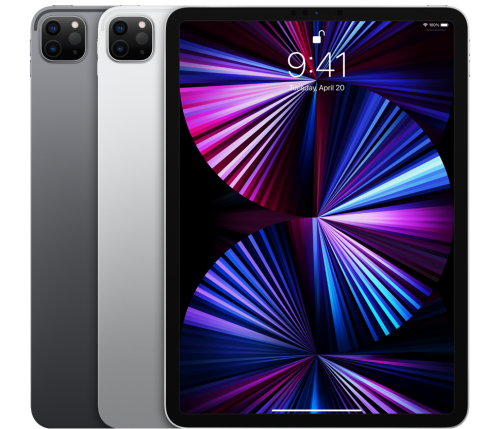
[ad_1]
iPads are great devices for executing plenty of various tasks. Whether you’re looking to play games, read eBooks, attend online classes or work meetings, write the next best-selling novel, or even develop and publish iOS apps, these versatile tablets can help you with all of that. Choosing which iPad to buy can be pretty confusing, though. This is the Apple iPad Air 5 (2022) vs Apple iPad Pro (11-inch, 2021) — two M1-powered tablets with plenty of similarities. Whether you buy the iPad Air 5 or the iPad Pro, you might want to take a look at our list of best chargers. Additionally, don’t forget to protect the iPad Air 5 or iPad Pro 3 11-inch with a case.

Navigate this article:
Apple iPad Air 5 vs Apple iPad Pro 11-inch 3: Specifications
| Apple iPad Air 5 | Apple iPad Pro 11-inch 3 | |
|---|---|---|
| CPU | Apple M1 chip | Apple M1 chip |
| Body |
|
|
| Display |
|
|
| Cameras |
|
|
| Memory |
|
|
| Battery |
|
|
| Connectivity |
|
|
| Security | Touch ID | Face ID |
| OS | iPadOS 15 | iPadOS 15 |
| Colors |
|
|
| Material | Aluminum | Aluminum |
| Price | Starts at $599 | Starts at $799 |
Build and Design


Design can be a very subjective matter. However, we can make objective observations and list the build details to help you decide which of the two M1 iPads works best for you. Starting with the build, both tablets feature an aluminum chassis on the edges and back. So when it comes to their durability, the two should be similar. Speaking of aluminum — and moving on to the design — the iPad Air 5 comes in five different finishes to choose from, while the iPad Pro 11-inch 3 settles for two. So if you’re not satisfied with Silver and Space Gray (and aren’t a fan of cases), then you will be limited to the iPad Air.
Apart from the different color offerings, these two iPads look almost identical. Starting with the front, both tablets feature an edge-to-edge display with rounded corners and thin bezels. Considering they have similar sizes, by just looking at the front, it’s hard to tell which is which. The TrueDepth camera on the iPad Pro is one notable difference, but it still needs you to focus to spot it.


Moving on to the rear, both the iPad Air and iPad Pro feature the same back design. The most significant difference is the camera system. The Air model has a single camera with no flashlight, while the Pro iPad has a Pro camera system — including two lenses, a LiDAR Scanner, and a flashlight. Otherwise, both tablets look pretty much the same.
Display


Having a solid display on the iPad is essential. Considering the device is aimed at large-screen media consumption, a mediocre quality would make the experience less immersive. Fortunately for all of us, both iPads have great screens. Despite their similar appearances, though, the two displays have some major differences that set them apart.
For starters, both screens have rounded corners and are the same size. Well, the iPad Air is 0.1-inch smaller. So on both devices, you’re getting a glass slab that is almost 11 inches (diagonally). Considering the iPad Pro is a Pro iPad, it does get some additional love from Apple. Its screen supports the ProMotion technology — which is 120Hz refresh rate support. This perk remains absent on the iPad Air 5. Additionally, the Pro model gets a pixel resolution of 2388-by-1668, while the Air model goes for a 2360-by-1640 one. The resolution difference is pretty minor and you likely won’t be able to differentiate between the two. However, the ProMotion technology is notable enough to make a difference.
Putting the resolution and refresh rate aside, the iPad Pro 11-inch also supports 600 nits of maximum brightness, while the iPad Air 5 maxes out at 500. If you mostly use your iPad indoors and not in direct sunlight, then you likely won’t notice a difference between the two. Otherwise, they both support Apple Pencil 2 and have pretty much the same characteristics.
Performance


Apple initially designed the M1 chip for the Mac lineup. In 2021, though, the company surprised us by bringing it to the iPad Pro. The Cupertino tech giant then further blew us away by introducing it in the middle-range iPad Air in early 2022. Considering the unrivaled processing power it packs, both the iPad Air 5 and the iPad Pro 11-inch 3 offer a buttery smooth experience. However, there are other aspects to consider when weighing their different performances.
Both iPads support the latest iPadOS 15 and include 8GB of RAM. However, the iPad Pro supports up to 16GB if you buy the 1TB or 2TB variant. So if you plan to use your iPad for Pro content — such as building apps through Apple’s Swift Playgrounds — you might want to consider the faster iPad Pro. Otherwise, both tablets are solid in the processing department, despite the limitations of iPadOS.
Cameras


The camera isn’t typically an important point when buying an iPad. After all, the device isn’t as portable as the iPhone — which people tend to use for photography. Nonetheless, it’s important to point out the difference between the two. Starting with the rear cameras, the iPad Air 5 has one 12MP Wide camera. The iPad Pro 11-inch 3, on the other hand, pairs that with a 10MP Ultra Wide lens with a 125º field of view (FoV). That’s not to mention it having a LiDAR Scanner for 3D mapping and a flashlight for dark shoots. If you plan to use your iPad for mapping rooms or other structures for 3D modeling, then the Pro model is what you should aim at. If the camera isn’t much for a big deal, then the Air is more than decent.


Moving on to the front-facing side, the iPad Air has a 12MP Ultra Wide 122º FoV FaceTime camera with support for Center Stage. This feature keeps your face(s) centered when you’re moving around — even if the iPad is in a stationary position. The iPad Pro gets the same lens with some extra perks. Thanks to the TrueDepth camera system and the additional sensors, it’s capable of taking Portrait mode shots. That’s not to mention Face ID support for authentication. The Air model resorts to a Touch ID sensor that lives in the Power button.
Battery Life and Charging


Terrible battery life can be a dealbreaker for many potential customers. After all, Apple is advertising the iPad as a PC replacement for some. So having a reliable battery that gets users through a work or school day is fair to expect. The iPad Air 5 and iPad Pro 11-inch have 28.6‐watt‐hour and 28.65‐watt‐hour respectively. So they’re pretty much identical. The company claims that you can surf the web or watch videos for 10 hours in a row on a single charge on either of the two iPads. So there are no winners in this round as the company gives them the same ratings. Ultimately, based on my personal usage, the battery life should be more than enough to get you through a day of moderate use.
Expectedly, both iPads have USB Type-C ports, and that’s it. Their boxes include 20W charging bricks and USB Type-C to USB Type-C cables. Based on my tests, the iPad Air 5 takes around 2 hours and 15 minutes to charge from 0 to 100% when not in use. Considering its large size, that’s a decent speed in the tablet department. The iPad Pro should also charge at a similar rate — considering the two share similar batteries, processors, and operating systems.
Apple iPad Air 5 vs Apple iPad Pro 11-inch 3: Which M1 tablet should you buy?
The iPad Air 5 and iPad Pro 11-inch 3 start at $599 and $799 in the US respectively. Despite the former being officially a mid-range tablet, it still offers a Pro performance at a reasonable price. For those who don’t need the bigger storage, higher RAM, better display, or advanced camera system, the iPad Air should be more than enough for typical needs. Ultimately, the two tablets are identical in a lot of ways, and not many people would justify paying $200 more for the higher-end model. When it comes to value for money, the iPad Air 5 easily wins. In the specifications battle, the higher-end iPad Pro 11-inch 3 obviously wins.
Which of the two M1 tablets will you be buying, and why? Let us know in the comments section below.
[ad_2]
Source link

